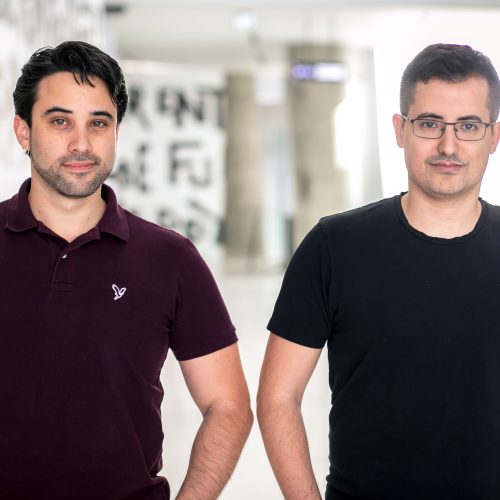A star in the developer community for the past decade, Croatian entrepreneur Ivan Burazin made a bold choice last year – he left the corporate world and Croatian unicorn Infobip where he was Chief Developer Experience Officer, and started his own new venture.
Daytona is a bet that Burazin is willing to take – the self-hosted “Development Environment Management” platform raised $2 million in pre-seed funding in November last year and managed to exceed the initial target and backed by sound industry leaders.
What does Daytona do? The platform simplifies the creation of standard and secure developer environments, automates environment setup on new project branches, and facilitates environment sharing among team members.
In essence, Daytona offers functionalities akin to Github Codespaces, but with the added advantage of being self-hosted on an organization’s own infrastructure.
It wasn’t an easy road from having the initial idea and realizing it – Daytona’s journey began in 2009 with a project called PHPanywhere, which later evolved into one of Burazin’s other venture called Codeanywhere. While he also founded what is now the biggest developer conference in Southeast Europe in 2012, Infobip Shift (originally Shift, and then becoming a part of Infobip in 2021), the stealth work on Daytona finally came into fruition more than a decade later.
In an interview with IT Logs, Burazin describes the journey itself and what Daytona aims to achieve next when it comes to making lives easier for developers and enterprises.
IT Logs: When did you start realizing Daytona itself and what was the idea behind it?
Ivan Burazin: We basically started working on the idea last summer. The reason why is because we still sort of had this side project, which was Codeanywhere, which is a cloud-based development environment. So, a very different product, more of a browser-based editor. Think of it more as an interface like Google Docs place, where you log in and you work. Daytona is something different, it’s basically the infrastructure underneath. So, Codeanywhere is a tool for the end developer, whereas Daytona is a DevOps tool made for the enterprise – the developer is still the end user, but the buyer is the enterprise, the DevOps team, or the platform team.
How we came to the idea was that last summer we started getting a lot of inbound interest from different parties, different types of people. Codeanywhere is very highly ranked on Google if you search cloud development or remote development, and don’t even though it’s not the product, people reached out to us and emailed us either personally or through the support tickets. We also had a handful of customers, who are now customers of Daytona, which were like “hey, we need this product., so you guys need to offer it”. Because all these people were calling us, we started to work on this product. So some of the team members from Codeanywhere, some new team members, we actually sat together and said “hey, this looks interesting, why don’t we try and solve this”. So again, it seems similar, but it’s very different, and built from scratch. It actually has nothing to do with Codeanywhere, but we’d like to say it’s a spiritual successor. Because it is essentially the same mission we started with Codeanywhere, which is how we can utilize cloud resources to increase developer velocity.
Another thing is that when we talked about Codeanywhere, 10 years ago, in the sense that you’re working on your local machine, or developers go work somewhere else, people thought we were crazy. And basically, hung up the phone or said that it is not happening. But now with GitHub Code Spaces, it has become not an insane idea, there are investors wanting to invest in it and customers wanting to buy it. So it is something we’ve been trying to build since essentially 2009 and now it was basically a walk through the door, because all the stars aligned.
How does the product make life easier for the customers, in this case the enterprises?
The product is more oriented towards the customer, or the buyer, which is the enterprise. So there’s basically three things that it does very well to increase developer velocity across the organization. And the first one is scalability. So what that means is that if there is an issue with your resources and we’ve seen a lot of companies have this right now, this issue is that the laptop is too small, they will be like here is a cloud hosting somewhere and use that to spin up your development environment and you can work remotely.

But the issue is, that’s easy with one developer, two developers, when you have literally 500 or 1000 developers, that becomes an entire mess, because you need a full DevOps team to manage the spinning up and spinning down of development environments, the ones that are blocked or whatever. You also don’t have any sort of security audits or controls, or you don’t have any observability of like, who’s doing what you have no idea what it needs, what anyone is doing. And that can be very dangerous when you have a publicly hosted development environment, because you can run code essentially publicly on that. It works when there’s high trust and there is a small number of developers, but when there’s a large one, it’s just huge overhead and a security risk.
The second one is actual security. So Uber was fined $20 million by the Federal Trade Commission for source code leakage. Essentially, the source code got out because it was on a laptop, it was not somewhere secure. So this happens, and Uber then had to create a product similar to Daytona to have the they said no more all developer environments are now on a secure server, and you guys have to run it from there. So we essentially help companies with that issue of security.
And the last one is basically that it helps both the company and the engineer is that with one single click or one line of code, you can spin up a development environment instantly. And we also remove the issue where you can find a lot of memes on the internet, which is the “it works on my machine” problem. So you and I are working together, there’s a lot of you have to install dependencies and configure things and it might not work. And so what our system does, it enables the developer environment to always work, you basically just have to hit a button, it spins up and it works right away. So, a developer can stop wasting their time on debugging the development environment, and working on the actual code. Engineers spend anywhere from 50 to 70% of their productive time on these types of debugging, which they shouldn’t have to do. And so this makes the developers’ lives easier, but also it becomes more interesting for the companies itself, because then their developers are more productive.
You’re going to be based in the US, but you aim to have a regional presence as well, correct?
The idea with this company is we want to basically hire the best people we can for the company. And so, because it’s a developer tool, it’s a very hard company to staff, because everyone essentially has to be an engineer, even if they’re not working as an engineer. So if you’re doing sales, you have to be an engineer, you have to do marketing, you have to be an engineer through content creation, if we engineer because we’re selling to engineers, and if you don’t understand that you can’t basically convey value.
So it’s very hard to be locked into one region if you’re not San Francisco, to hire these types of people. So what we wanted, what we were planning was from the get go with, let’s hire the best people for the job no matter where they are.
We’re also looking to hire someone now in LA and Chicago. But we also have a bunch of the team in cities across Croatia, as well. So not everyone is in one city, they’re all over. So when deciding to do this, the idea was to get the best person for the job. And doing that means that you have to hire them wherever they are.
To be the company we can and to compete with the likes of Microsoft, I think we have to take everything we can to our advantage and that is being worked from anywhere policy.
For yourself personally, do you see Daytona continuation of your mission that you start with Codeanywhere, Shift and Infobip?
Yeah, absolutely, I think the culmination of my job or history brought me to this point. And that’s one of the reasons I decided to do it as well. Because with Codeanywhere, we learned how to not build a dev tool in the sense that dev tools usually are built bottom up. But development environment tools, and I can see competitors making the similar mistakes that we do with Codeanywhere is try bottom up. For this specific product, your user basically needs you above 200 engineers, so that’s an enterprise first product.
But again, Edison said “I didn’t fail, I’ve found 10,000 ways it didn’t work”. I feel that with Codeanywhere we found a way that it didn’t work, and this taught us something. On the other hand, with Shift we learned how to sell to the end user and to the enterprise, because essentially, we’re doing a conference for developers in the same market with different products, like you’re selling sponsorships to enterprise, which is B2B. And lastly, with Infobip I learned a lot about actually working inside the enterprise, because I’ve never done that before.
One, my job was to take a top down B2B company, and add the bottom up motion. But also as an employee of the company, I was the buyer for other enterprise software, so now I know what I’m selling. So, all these things that I did, Codeanywhere, Shift and Infobip got me prepared to take on this job.
Where do you see Daytona in the next three to four years?
Phase one right now is basically becoming the de facto standard for enterprises, the way they run and manage the cloud of open environments. How we’re gonna do that is a bit more nuanced, and it’s a work in progress. But definitely, if you’re going out to create a company today, I think the only way to think about it is to become sort of a de facto standard for that.
Essentially, in every single market, you have three major companies, and I’ll take source code repositories for example. So GitHub owns 60% of the market, then it’s GitLab, and then Big Bucket with the least amount. And that goes for operating systems as well, Mac, Windows, Linux, everything’s basically in threes. I still think there’s a huge opportunity for who is going to run development environments. No one has been sort of defined there, and we definitely want to be the biggest of the three, so that’s sort of the plan.













